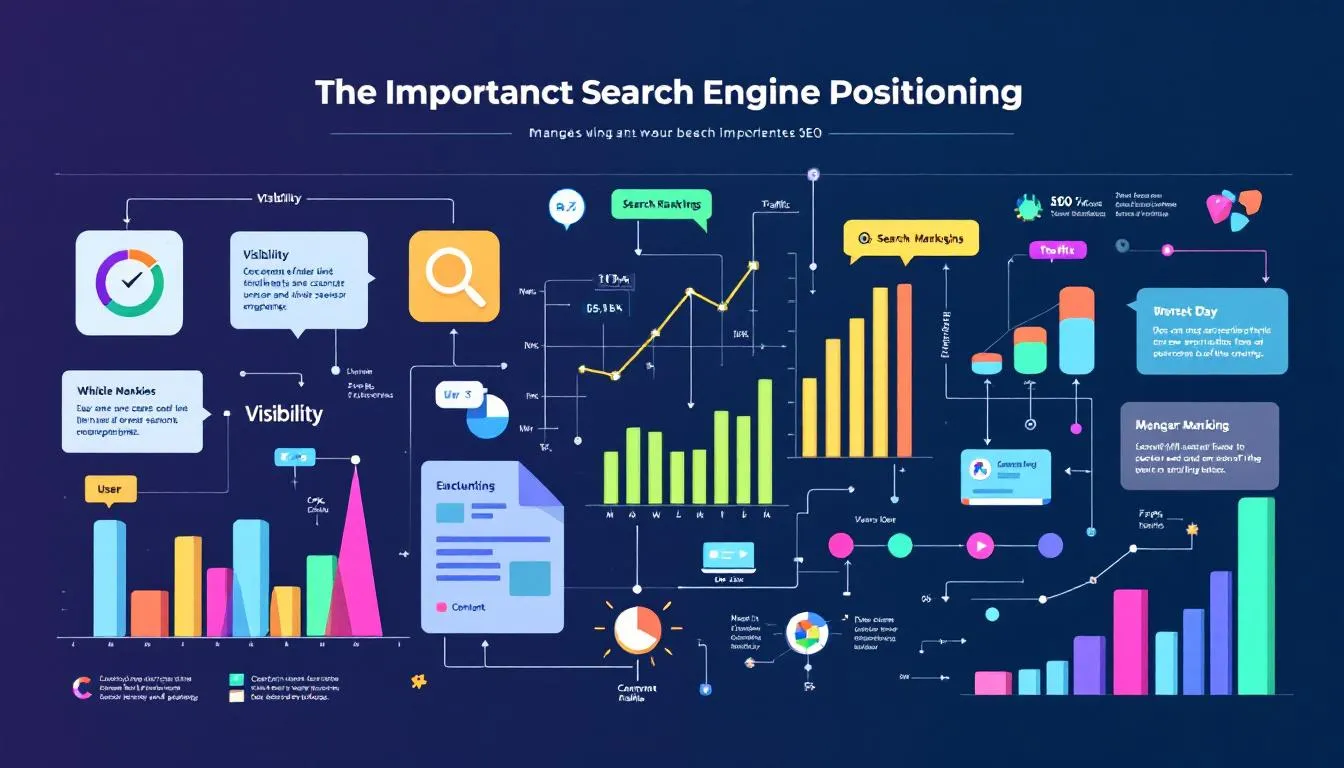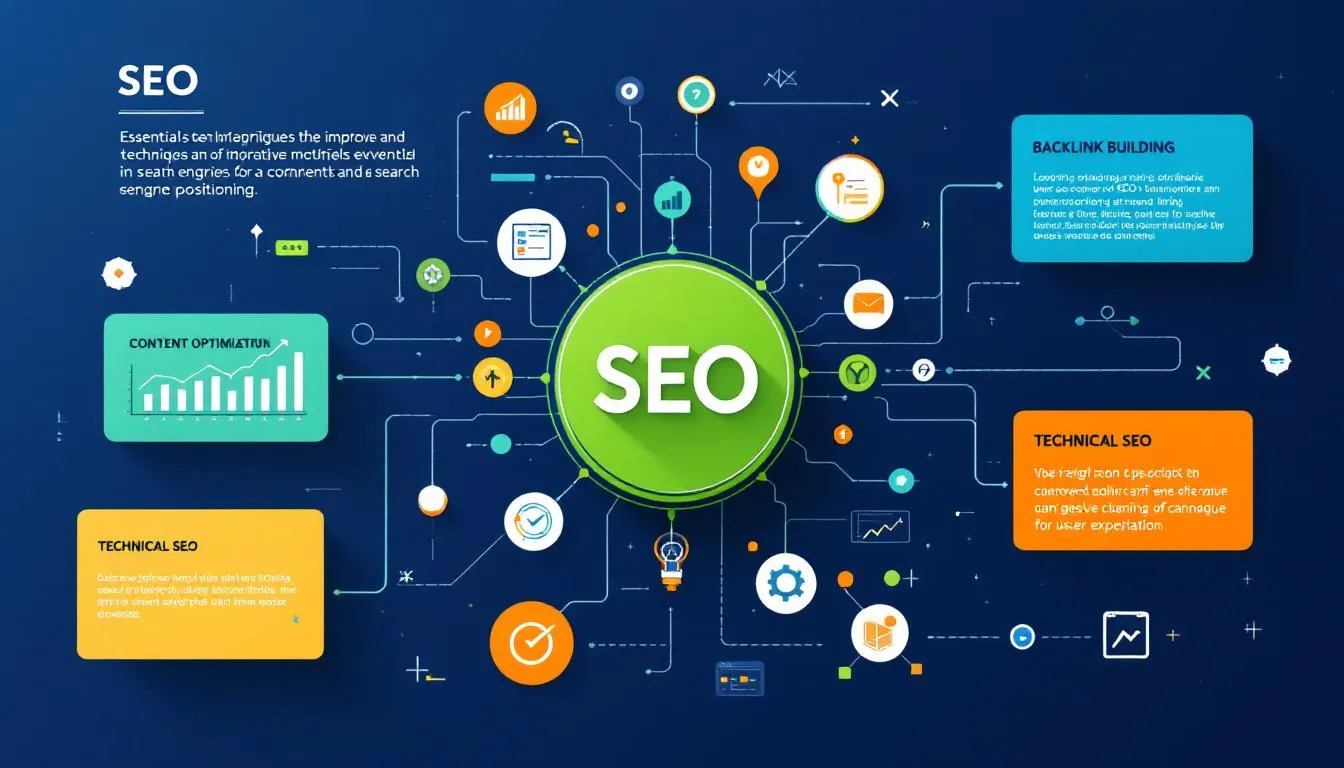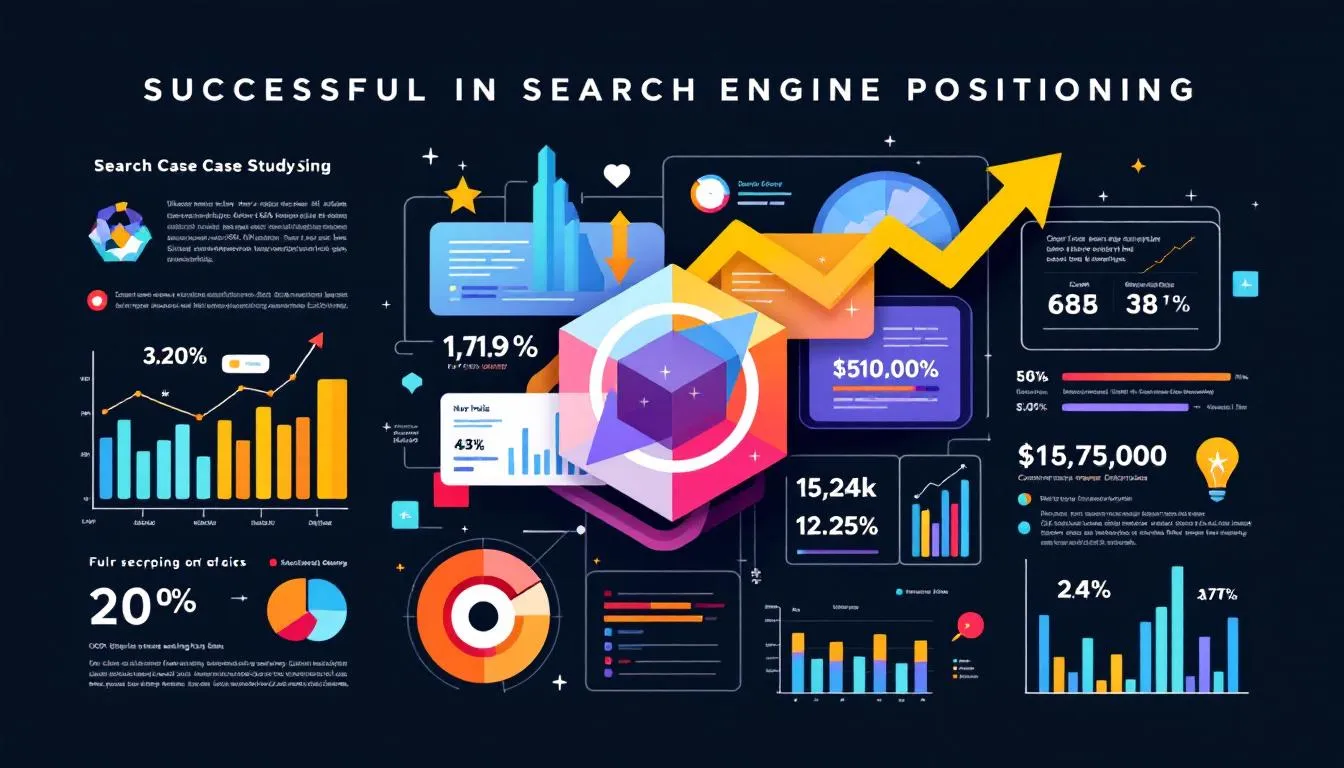Key Takeaways
* Search engine positioning focuses on optimizing individual web pages for higher visibility and click-through rates, essential for driving organic traffic.
* Unlike general SEO, which targets overall website performance, search engine positioning hones in on specific pages, making it a critical subset of SEO strategies.
* Regularly refreshing content, optimizing internal links, and leveraging technical SEO are crucial techniques for improving search engine positioning and sustaining high rankings.
Understanding Search Engine Positioning SEO

Search engine positioning involves optimizing web pages to achieve higher rankings in search engine results, thereby enhancing their visibility. The main objective is to make specific pages more likely to be clicked by users. This not only helps in building a successful online presence but also enhances brand visibility.
Various factors influence higher rankings in search engine positioning, including the use of relevant keywords, key phrases, and the overall website structure. Search engines assess metrics such as content relevance and site structure to determine page rankings, making it crucial to fine-tune individual pages for better performance.
In essence, effective search engine positioning is fundamental for driving organic search demand, lowering acquisition costs, and achieving long-term scalability.
Why Search Engine Positioning is Crucial

Effective search engine positioning is essential for improving a brand’s online visibility. In today’s digital age, a strong presence in search engine results pages (SERPs) is crucial for attracting organic traffic to your website. A well-executed search engine positioning strategy can lead to significant returns in terms of increased organic traffic and improved conversion rates in the realm of serp real estate and serp features.
High rankings on SERPs not only lead to increased traffic but also contribute to greater popularity for websites. For businesses, additional visibility in search results can lead to higher click-through rates and better overall performance. Moreover, a well-optimized website can help you rank higher by attracting more qualified traffic to your site.
In the competitive online marketplace, effective search engine positioning gives businesses an edge. A strong search engine presence helps attract traffic that might otherwise go to competitors, enabling businesses to compete more effectively for customer attention. This makes search engine positioning an indispensable part of any digital marketing strategy.
Key Differences Between Search Engine Positioning and SEO
While search engine optimization (SEO) and search engine positioning are often used interchangeably, they have distinct focuses. SEO encompasses a wide range of practices aimed at improving the overall performance of a website. This includes everything from keyword research and site structure optimization to content creation and link building. In contrast, search engine positioning zeroes in on optimizing specific pages to boost their visibility in search engine results.
Think of search engine positioning as a subset of SEO, where the broader SEO strategies lay the foundation for more targeted efforts. While SEO involves creating a well-structured website and performing extensive keyword research, search engine positioning focuses on fine-tuning individual pages for quicker results. This targeted approach can lead to faster improvements in search engine rankings, making it a crucial component of a comprehensive SEO strategy.
Essential Techniques to Improve Search Engine Positioning

Improving search engine positioning requires a variety of techniques that enhance the visibility and ranking of individual pages, including optimizing target pages, refreshing existing content, and enhancing internal links. Each of these strategies plays a crucial role in boosting your search engine positioning efforts and driving more organic traffic to your site.
Here’s an exploration of each technique.
Optimizing Target Pages
Optimizing target keyword pages, particularly the particular page, is fundamental for search engine positioning. Key recommendations include:
* Prioritize evergreen content and core product pages to keep them relevant and valuable to your audience.
* Meta descriptions should be around 105 characters long to maximize exposure and engagement.
* Place popular phrases near the beginning of meta tags to enhance visibility.
Key SEO considerations include:
* Title tags should remain under 60 characters to avoid truncation in search results.
* Page content must be relevant and provide real value to maintain high rankings on search engine results pages.
* Using Google Search Console to prompt re-indexing can help update your pages more quickly in Google’s index. Additionally, focusing on page SEO can enhance your overall strategy.
Another important aspect is the featured image, which is the first thing searchers see. Making it attention-grabbing and relevant can significantly impact click-through rates and overall engagement.
Refreshing Existing Content
Refreshing existing content maintains its relevance and effectiveness. Regular updates prevent content from becoming stale and help restore lost traffic due to outdated information. As search intent and information change over time, updating articles to reflect new pages and data is essential.
When refreshing content, consider top-ranking results. Analyze the target audience, content length, and the questions it answers to ensure updates are comprehensive and relevant content.
Sharing updated content on social media marketing can further improve its performance and reach.
Enhancing Internal Links
Internal links are hyperlinks that direct users to other pages on the same website. They help improve navigation and enhance SEO. A solid internal linking strategy is essential for improving search engine positioning efforts as it helps distribute page authority across a website, making less prominent pages more visible. Keyword-rich anchor text in internal link clarifies the content of the linked page and enhances its relevance, contributing to overall link equity and link profile.
Avoid common pitfalls like too many links or broken links, which can negatively impact your site’s SEO performance and contribute to your site’s seo issues. Ensuring that your internal links are strategically placed and relevant to the content can significantly improve your site’s search engine ranking and visibility.
Leveraging Technical SEO for Better Positioning

Technical SEO is a critical component of search engine optimization that focuses on the backend aspects of your website, ensuring it meets the technical requirements of search engines. Core Web Vitals are key metrics that assess real-world user experience concerning loading speed, interactivity, and visual stability of web pages. For instance, the Largest Contentful Paint (LCP) should occur within 2.5 seconds of the page load to ensure a positive user experience.
Key elements for enhancing page experience include:
* Aiming for an Interaction to Next Paint (INP) of under 200 milliseconds to enhance page responsiveness.
* Maintaining a Cumulative Layout Shift (CLS) score below 0.1 for visual stability and user satisfaction.
* Improving mobile friendliness.
* Utilizing HTTPS.
* Minimizing intrusive interstitials.
* Focusing on page speed.
Stone Temple saw an 84% rise in organic traffic by optimizing their site for mobile users, highlighting the impact of technical SEO on search engine positioning.
Measuring Search Engine Positioning Success
Measuring the success of your search engine positioning efforts is essential for understanding your SEO performance and driving continuous improvements. Utilizing tools like Google Search Console and third-party SEO tool can provide valuable insights into your search engine rankings and overall performance.
Let’s explore these tools in more detail.
Google Search Console
Google Search Console is an indispensable tool for monitoring search queries, click-through rates, and overall SEO performance. Key features include:
* Filtering organic performance data by search query, landing page, and date range
* Providing a comprehensive view of how different pages are performing in search results
* Monitoring the average search position for webpages, helping you identify areas for improvement, as outlined in google search central.
Combining data from Google Search Console with Google Analytics helps google offers a holistic view of your website’s performance, enabling data-driven decisions that can enhance your search engine positioning efforts.
Third-Party SEO Tools
Third-party SEO tools like Semrush and Ahrefs are essential for tracking keyword rankings and analyzing competitors. Semrush’s Position Tracking feature, for example, allows users to:
* Monitor keyword rankings effectively
* Compare keyword rankings over time
* Generate reports summarizing the domain’s visibility, estimated traffic, and average position.
Using these tools can provide deeper insights into how to measure search engine positioning strategy, helping you identify opportunities for improvement and stay ahead of the competition.
Advanced Strategies for Sustaining High Rankings
Maintaining high search rankings requires extensive high quality content that thoroughly addresses related questions, as Google now prioritizes depth over brevity. Demonstrating topical authority involves developing interconnected content that establishes your expertise across multiple related subjects. This not only improves your search engine positioning but also enhances your credibility and trustworthiness.
Google’s E-E-A-T framework emphasizes the importance of showcasing real experience and expertise through specific keywords and credentials. Optimizing for zero-click searches is also essential, as nearly 60% of google search results now provide information directly without user behavior having to click through to a search result.
Targeting featured snippets and implementing schema markup can significantly enhance your search visibility. Applying positioning strategies to new content ensures it occupies prime SERP positions from the start, helping you maintain high rankings and drive more organic traffic to your site.
Case Studies of Successful Search Engine Positioning

Competitor analysis tools like Semrush and Ahrefs provide detailed insights into keyword rankings and SEO strategies that can inform your search engine positioning efforts. For example, Impact increased their organic traffic by 62% in three months by updating existing blogs with keyword-optimized content. Similarly, Backlinko’s content overhaul led to a remarkable 110% increase in organic traffic within just two weeks.
HubSpot boosted their organic traffic by 50% in one month by organizing content into topic clusters, demonstrating the power of strategic content organization. These case studies highlight the effectiveness of various techniques and tools in achieving successful search engine positioning.
Understanding market dynamics and optimizing strategies accordingly can lead to similar success and improved search engine visibility.
Summary
In summary, mastering search engine positioning involves a combination of optimizing target pages, refreshing existing content, enhancing internal links, leveraging technical SEO, and measuring success with the right tools. By implementing these strategies and learning from successful case studies, you can significantly improve your search engine rankings, drive more organic traffic, and achieve long-term success in the digital landscape. Stay ahead of the curve and let your website shine at the top of search engine results pages.
Frequently Asked Questions
What is an SEO example?
Optimizing your bakery's website with keywords like "best cupcakes in Miami" is a great SEO example that helps local customers easily find your delicious treats. By focusing on relevant search terms, you can significantly boost your online visibility.
What is search engine positioning?
Search engine positioning is all about tweaking your web pages to rank higher in search results, making it easier for people to find you online. The goal is to enhance your visibility and attract more visitors.
Why is search engine positioning important?
Search engine positioning is crucial because it boosts your brand's visibility, drawing in more qualified traffic and ultimately improving your online performance. The better you're positioned, the more likely customers are to find you.
How does search engine positioning differ from SEO?
Search engine positioning is a specific aspect of SEO aimed at optimizing certain pages for faster visibility, while SEO includes broader strategies to boost the overall performance of your website. In short, positioning is just one piece of the SEO puzzle.
What tools can help measure search engine positioning success?
Using tools like Google Search Console →, Semrush →, and Ahrefs → can really help you keep track of your search engine rankings and analyze your competition effectively. These platforms make it easier to make informed decisions for your SEO strategy.
Word Count: 2,035
Author: LLM Relevance Team
This article includes affiliate links. We earn a commission if you purchase through our links, at no extra cost to you. We only recommend tools we've tested with real small businesses.
